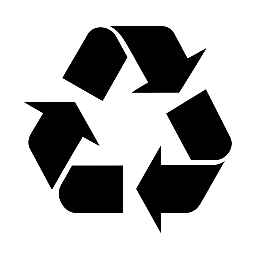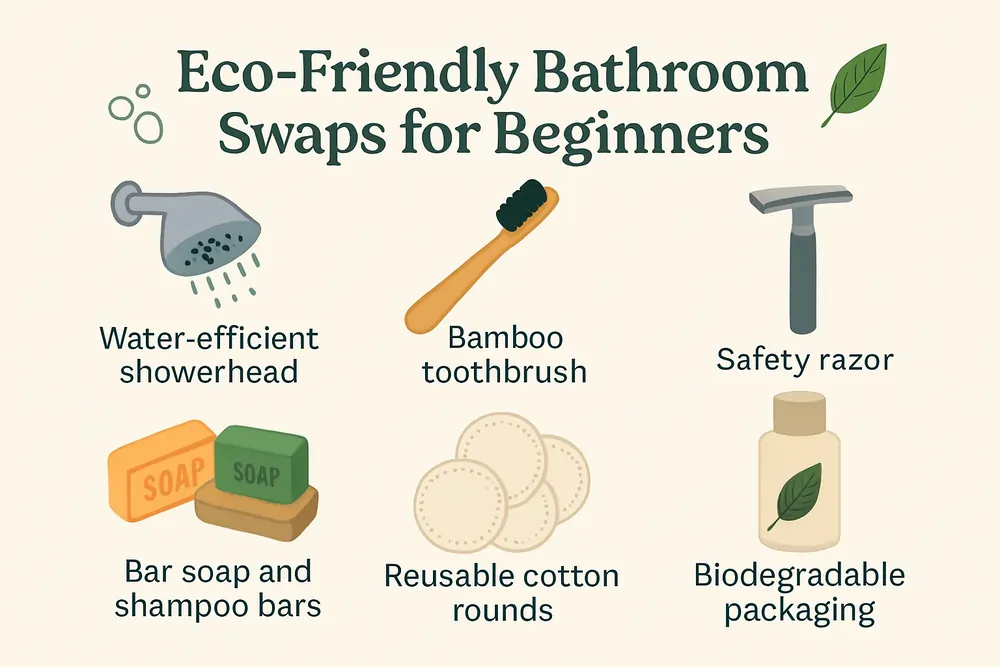Think of the bathroom as an iceberg: your visible toiletries are just a fraction of the environmental impact beneath. Hidden water waste, plastic clutter, chemical runoff, energy use—all of these add up. But the good news is: tiny swaps here bring significant wins—for your wallet, your well-being, and the planet.
Step 1: Water Savers Without Sacrifice
- Low-flow or WaterSense‑certified showerheads slash water usage by 20–60%—and reduce energy bills by cutting hot water usage.
- Faucet aerators and smart controls (e.g. pause buttons) help cut flow during lathering.
- Shorter showers + turning off taps while brushing save gallons per day; it’s simple but powerful Eco Friendly Bliss.
Step 2: Swap Single-Use for Reusables
| Conventional | Eco Swap | Why It Works |
|---|---|---|
| Plastic toothbrush | Bamboo toothbrush | Renewable, compostable, avoids microplastic build-up |
| Plastic or nylon floss | Silk or compostable floss | Minimal packaging, biodegradable |
| Disposable razors | Stainless-steel safety razor | Long-lasting, metal-recyclable, reduces landfill plastic |
| Cotton makeup pads | Reusable cloth rounds | Washable, super-low-waste |
| Menstrual cups or period underwear | Reusable menstrual care | Cuts thousands of tampons/pads per user lifetime |
Step 3: Clean and Moisturize Smarter
- Ditch plastic bottles and opt for bar soaps, shampoo bars, conditioner bars in cardboard or compostable wrapping. These often use fewer chemicals and last longer.
- Consider DIY cleansing and moisturizers: simple blends using coconut oil, beeswax, calendula, and castile soap serve multiple purposes—from face, body, and even cleaning brush tools—reducing waste and ingredient overload.
- When purchasing cleaning products, choose plant‑based, biodegradable formulations in recyclable or refillable packaging .
Step 4: Bathroom Textiles & Decorative Stuff
- Organic cotton or bamboo towels offer soft, absorbent alternatives with lower pesticide footprint.
- Swap plastic shower curtains or liners for organic cotton, hemp, linen, or glass enclosures where possible.
- Introduce plants like aloe vera, spider plant, or ferns to the bathroom—they thrive in humidity and help detoxify air naturally.
Step 5: Towels, Trash, and Lighting
- Use compostable trash bags or biodegradable liners instead of standard plastics; optionally include a small compost bin for non-contaminated biodegradable waste (like cotton swab stems or cardboard tubes) TUSHY+1The Guardian+1.
- Light your bathroom with LED bulbs or install smart lighting switches/timers to reduce electricity usage and enhance ambiance.
Step 6: Install for Impact (Optional Eyes Open)
- Consider adding a bidet or bidet attachment to significantly reduce toilet paper usage—this can cut toilet paper use by up to 60% Low Impact.
- If renovating, use materials like bamboo, recycled glass, terrazzo tiles, reclaimed wood, or low‑VOC paint to create sustainable surfaces—and improve indoor air quality .
🔧 How to Begin: A Realistic Routine
- Audit what you already own: make a list—reuse items until they run out instead of tossing them.
- Pick three swaps this month—e.g. bamboo toothbrush + bar soap + reusable rounds—and budget for next month.
- Shop at refill or zero-waste stores whenever possible; use online platforms for subscribe‑and‑refill services.
- Involve the household: set up cloth or glass labeled containers so everyone uses the eco supplies.
- Track savings: Water and electricity bills often drop handsomely—even more than the cost of you new items.
Final Thoughts
- Start small. Not every change happens at once. Pick a category and build from there.
- Refill, reuse, compost, then purchase. That order matters more than brands.
- Balance convenience and ethics. You don’t need to eliminate plastic instantly—but minimize it intentionally.
- Celebrate progress. Even a couple of swaps per month means less plastic, fewer chemicals, less water—and a more thoughtful bathroom ritual.


Leave a Reply